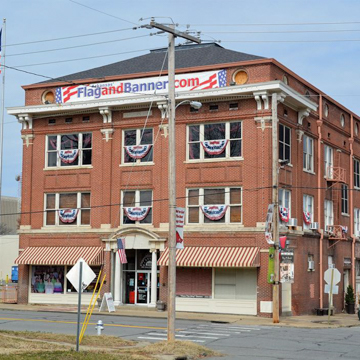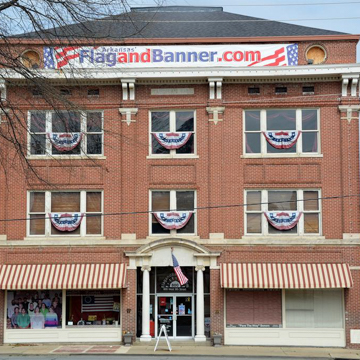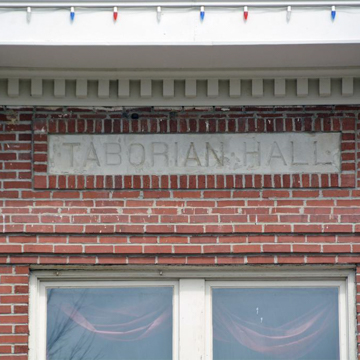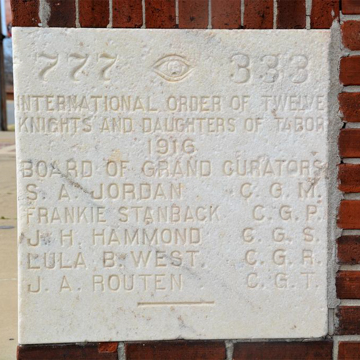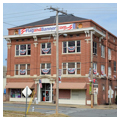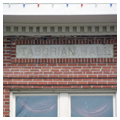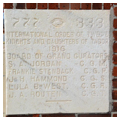By 1916, a second African American fraternal organization, the Order of the Knights and Daughters of the Tabor, commissioned African American contractor Johnson to design and build the three-story Taborian Hall. Like the Mosaic Templars (see PU31), the Knights and Daughters offered various services to their members, included offices for medical professionals, and provided spaces for social clubs and functions. In the mid-1930s, the Dreamland Ballroom was opened on the third floor, which over the years hosted such legendary musicians and entertainers as Duke Ellington, Louis Armstrong, and Ella Fitzgerald. But by the 1970s, desegregation and the construction of a major highway (I-630) through the neighborhood that Taborian Hall served led to the building’s closure. Taborian Hall, though smaller than the Mosaic Templars building, is similar in materials and style with a classical entrance, here with Ionic columns and a segmental-arched pediment, and brick pilasters terminating in stylized cast-stone capitals. In 1991 Kelly McCoy purchased Taborian Hall and began the slow process of restoring the building, including the ballroom, for commercial and social functions.
You are here
Historic Taborian Hall (Taborian Temple)
If SAH Archipedia has been useful to you, please consider supporting it.
SAH Archipedia tells the story of the United States through its buildings, landscapes, and cities. This freely available resource empowers the public with authoritative knowledge that deepens their understanding and appreciation of the built environment. But the Society of Architectural Historians, which created SAH Archipedia with University of Virginia Press, needs your support to maintain the high-caliber research, writing, photography, cartography, editing, design, and programming that make SAH Archipedia a trusted online resource available to all who value the history of place, heritage tourism, and learning.


